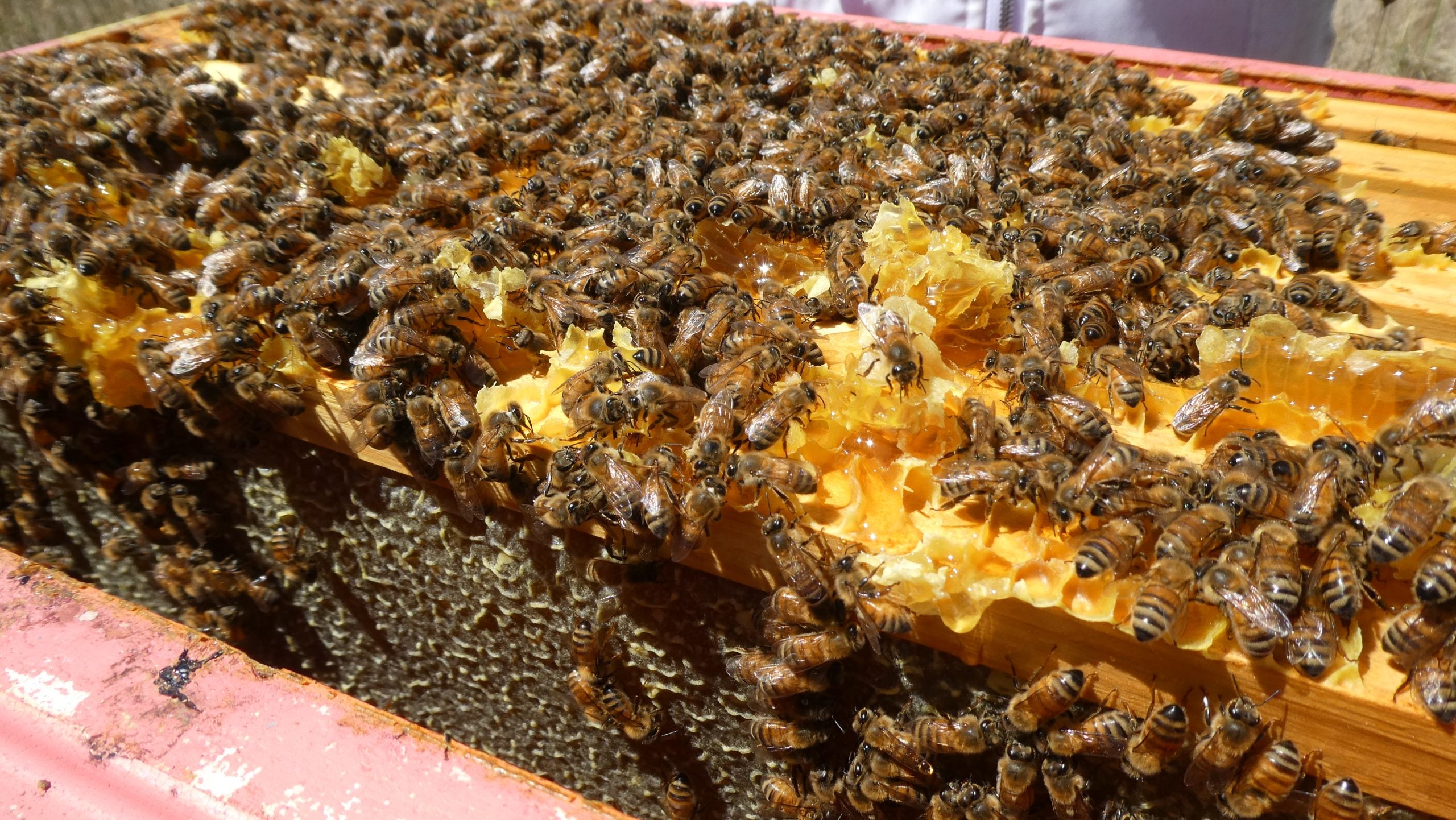
FREQUENTLY ASKED QUESTIONS
Our valued visitors and customers
Here we provide quick insight for visitors and customers to our website, who may have burning questions on queen bees or bees in general.
Each section below is laid out to provide you with answers to the most frequent questions visitors and customers ask us. We have an additional Fast Facts section for kids who may have bee or STEM projects.
We encourage you to read the FAQs here to find what you want. Should your question or query not be answered by our FAQs, contact us and and we will see what we can do for you.
Queen Bees
-
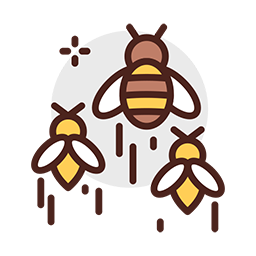
How many Queen bees are in a hive?
Typically, there is one queen bee per colony. We say “typically” because you might have two queens, particularly at times of the year when swarming and supersedure are underway, in Spring for example. We have seen a queen and daughter happily co-existing in a colony for weeks. When we are re-queening colonies and have found the queen that we want to replace, we keep looking to double check that there are not more in the hive.
-
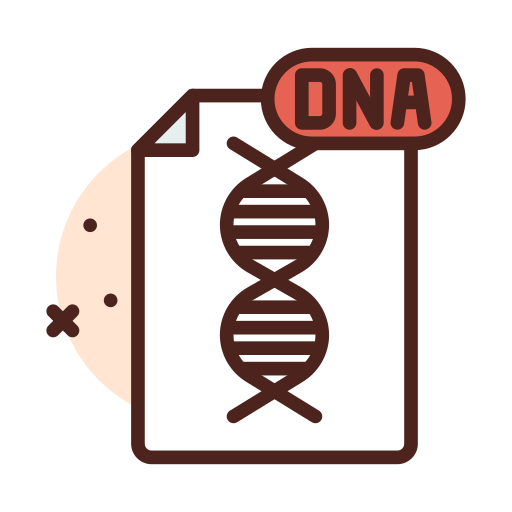
Do Queen bees mate in the hive?
No. The young virgin queen will fly out of the hive to an area where drones congregate, intending to mate. There can be as many as 20,000 drones from the colonies in the area, and a queen bee will usually mate with ten to twenty drones. Depending on her success, the queen may make several mating flights to ensure she is “well mated”. A queen will only mate once in her lifetime. The sperm she gathers from the many drones are stored in her body, and she will usually only leave a colony to fly again when part of a swarm.
-

How do I know which bee is the Queen?
There are three aspects to answering this question.
- Appearance – The Queen bee is larger than the worker bees of the colony and about the same size as the drones. The shape of her abdomen is quite distinct, being elongated and pointed at the end. The Queen bee averages between 2cm and 2.5cm in length and is around double the size of a worker bee. Even though the queen bee has the same size wings as a worker, they are relatively small compared to her longer body.
- Behaviour – When looking for a queen in the colony, it is essential to watch her behaviour. The queen will not be clambering in or over knots of bees, as the Queen bee is “regal” in moving around the frame. She is not in a rush, is tended to by 4-5 attendant workers and a path is made for her by the bees in the colony who move out of her way.
- Location, Location, Location – The queen will likely be near an area with plenty of eggs or where cells are available for laying; for example, around freshly emerged bees. The bees queue the queen as to where the available cells are by way of pheromones from newly emerged bees who communicate the orchestration. The further you are from these locations, the less likely the queen will be there.
-

How many eggs can a Queen bee lay?
At peak times, during colony build-up in Spring, the queen can lay around 1,500 eggs per day.
*
How long does a Queen bee live for?
The queen can live as long as five years. Unfortunately, in today's world of pesticides and other stressors, a queen is only expected to live for two to three years.
*
How is a Queen bee superseded?
A queen is replaced or superseded when the colony detects a physical problem or lessening performance. Queens control colony cohesion using pheromones. When these pheromones wane, the colony detects this change. The queen may also be injured; for example, a beekeeper might accidentally cause injury during a hive inspection.
In both these cases, the bees may decide to replace her. A poorly mated queen may also run out of semen for fertilising eggs and become a “drone layer”. In this situation, the supersedure of the queen is of little help because no fertilised eggs are available to make a new queen. In this situation, the colony will perish.
Bees and Hives
-
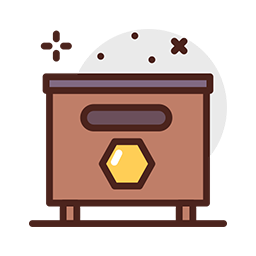
How many bees are in a hive?
Depending on the size of the hive equipment and the available space, a colony can contain upwards of 70,000 bees.
A typical colony housed in a hive consisting of a single brood box has about 20,000 - 30,000 bees. A healthy colony consists of a queen and several thousand drones; the remaining bees are female workers.
*
Do I need to maintain my hive?
Yes. It is good practice to inspect your colonies every 3-4 weeks. This can be as simple as a quick check of mite numbers (a 5 minute job) to a thorough biosecurity check (about 15-20 minutes). All beekeepers in Australia are required to do two biosecurity checks every year (one in Spring and one in Autumn) as well as check on the health of their colony and degree of varroa mite infestation every 3-4 weeks. If you don't check your colonies regularly then there is a high likelihood that they may perish from pests and disease.
-
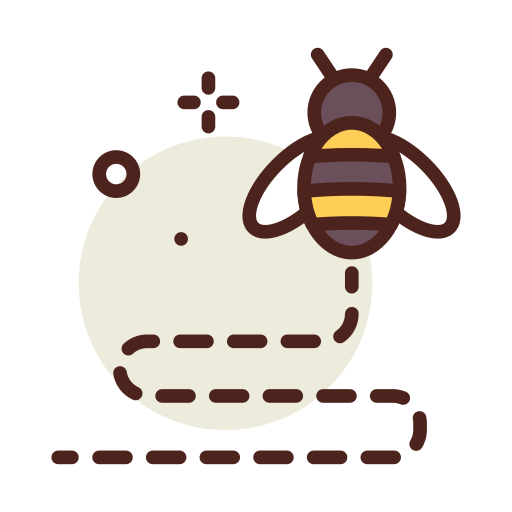
Do all bees in the hive have the same job?
A colony of bees is a highly complex operation. Apart from the queen – the egg layer and pheromone producer, and male drones who's role is colony reproduction, the female workers carry out all other tasks. Bees undertake the following jobs at different stages of their lives:
- House bees – clean and repair the hive cap cells and move nectar from the foragers to the honey supers
- Nurse bees – regulate the reproductive rate and state of the colony as well as care for the young larvae.
- Attendant bees – a small entourage of bees that constantly care for and groom the queen
- Guard bees – defend against intruders and rally other bees to the hive’s defence
- Forager bees – the day-to-day bees flying in and out of the hive to gather nectar, pollen, water and resin.
-
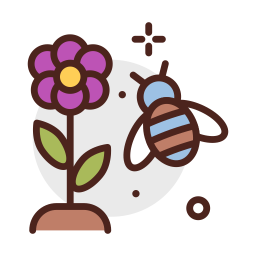
Which bees are male and female in a hive?
Except for the few thousand drones that each hive houses, all other bees in the colony are female.
*
I see several bees flying around a hive. What are the bees doing?
Most bees flying in and out of the hive are the foragers. Forager bees source the pollen, nectar, resin and water for the hive, returning to the hive to feed and sustain the hive community. You may see some bees circling the hive; these are the young forager bees conducting their orientation flights around the hive. The young forager bees are practising their flying and flight paths to become the next generation of worker bees.
-
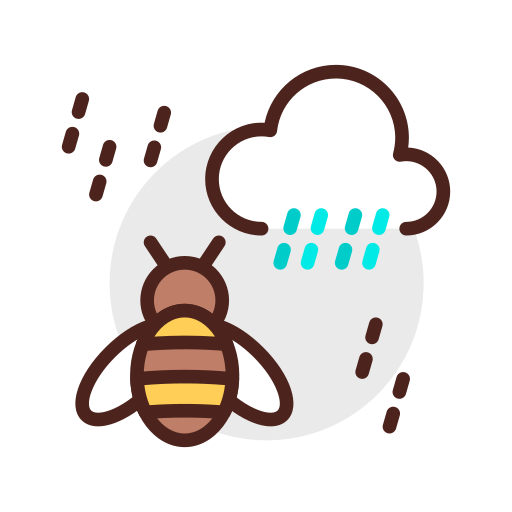
What is the life expectancy of a forager bee?
What is the life expectancy of a forager bee?
Foragers bees tend to live between 30 and 42 days. During their lifetime, forager bees maintain the hive for the seasonal honey flow of the warmer months. During the cooler months, the foragers have a different biology that extends their life to live longer, supporting the hive over Winter long enough to commence early spring building of the hive again.
*
Why do bees swarm?
Bees swarm because it is how a colony reproduces. In a good year, hives may swarm several times.
Honey
-
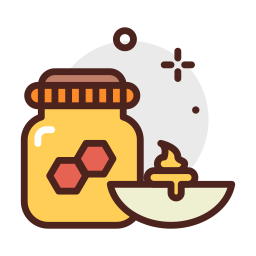
My jar of honey has crystallised. Why is that, and what should I do?
Honey is a super-saturated solution of different types of sugars and water. At any point – given the right circumstances – honey can crystallise. Some of these circumstances could be fine particles in the honey, temperature variation, and putting the honey in the refrigerator. You can warm honey in a bowl of hot water to make the honey runny again; remember not to leave the jar of honey in the bowl of hot water for too long. Crystallised honey is lovely to eat.
-

I have a jar of honey. Can honey go off?
In most cases, no, honey does not go off. However, raw honey can crystallise in product packaging. For example, creamed honey is very fine crystallised honey with the consistency of butter to spread on toast or sandwiches, and not have the creamed honey run all over the table, or you.
Technically, honey can be stored indefinitely, so long as the environment where the honey is stored, is stable in temperature.
-
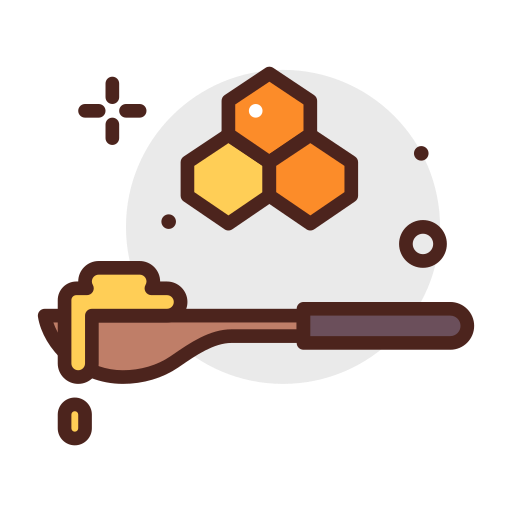
Can I cook with honey?
Yes. Honey is very versatile for baking, general cooking, adding to cereals, hot porridge and the like. Honey can be warmed in a bowl of hot water, added to your favourite beverage or included in your favourite meal before serving to retain the honey’s natural goodness.
*
Can I microwave honey?
Yes. So long as you understand that microwaving honey removes the honey’s natural antibacterial goodness.
-
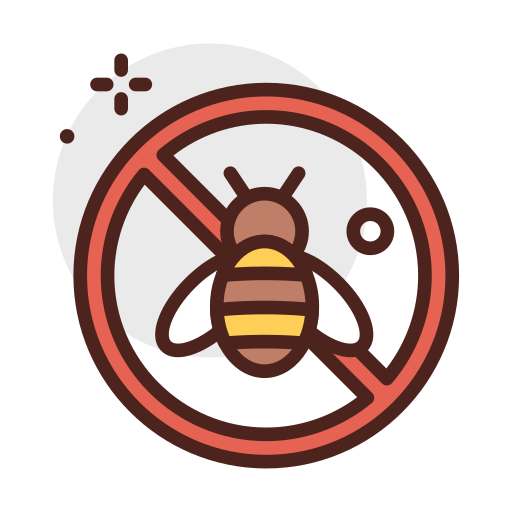
Some honey products add extra sugar to the natural honey mixture. Why is this practice done?
Adding sugar or syrup to natural honey is known as a filler. Sugar syrup is added to raw honey to increase the volume of the honey in the container the honey is sold in. This is why you should consider buying at least pure honey, at a minimum, as our honey tends to retain elements of raw honey.
If you want to experience the authentic, natural essence of honey, buying 100% raw honey is preferable.
Kids Corner
-

How long ago did humans record honey?
There are several options depending on your project’s time frame. The oldest known recording of honey hunting by humans is in Altamira, Spain, where Palaeolithic paintings in caves appear to represent honeycomb and a swarm of bees dating back to 15,000 to 10,000 BC. Other art depictions have been discovered in India and South Africa.
*
What is honey made of?
Honey is a liquid food and water-soluble. Because of this consistency, honey is around 18-20% water and crystallises at about 10°C to 18°C.
-

How do I know which animal family bees belong to?
For your science project, bees are part of the broader insect superfamily Apoidea. Beneath Apoidea are two suborders of insects: Hymenoptera and Symphyta.
Bees are part of the Hymenoptera suborder. Bee cousins include ants, ichneumons, chalcids, sawflies and wasps.
*
Cool school tip: All Hymenoptera insects have six legs!
-

Why are bees important to the environment?
Bees are nature’s ‘thermostat’ on how the environment is fairing. If there is a strong presence of bees in the environment, then the environment is healthy. Fewer bees mean there could be a more significant chemical, pest or disease impact on the environment.
*
Why are bees good for animals, agriculture and food?
Bees are essential to certain types of animals as bees form part of their food chain. Likewise, bees are critical to the global food chain and need our help. Around one-third of the food we eat relies on bee pollination. Parasites, pollution and pesticides are potential factors in the decline of the honey bee and native bee populations.
-

Why is beekeeping good for kids?
Children of beekeepers find beekeeping fun, innovative and educational. Beekeeping is an outdoor activity that helps children like you understand the social workings of nature.
*
Children enjoy the sensory experiences of hearing the buzz of the hives and bees and the experience of seeing how hives are built.
*
Cool school tip: In beekeeping, you can use your mathematics to count, you can think about how the bees build tessellation in their combs (engineering), use technology to record bee activities and apply basic science techniques to understand how a hive is functioning – STEM at it’s best.
Apiary and people icons provided by Darius Dan @ flaticon.com














